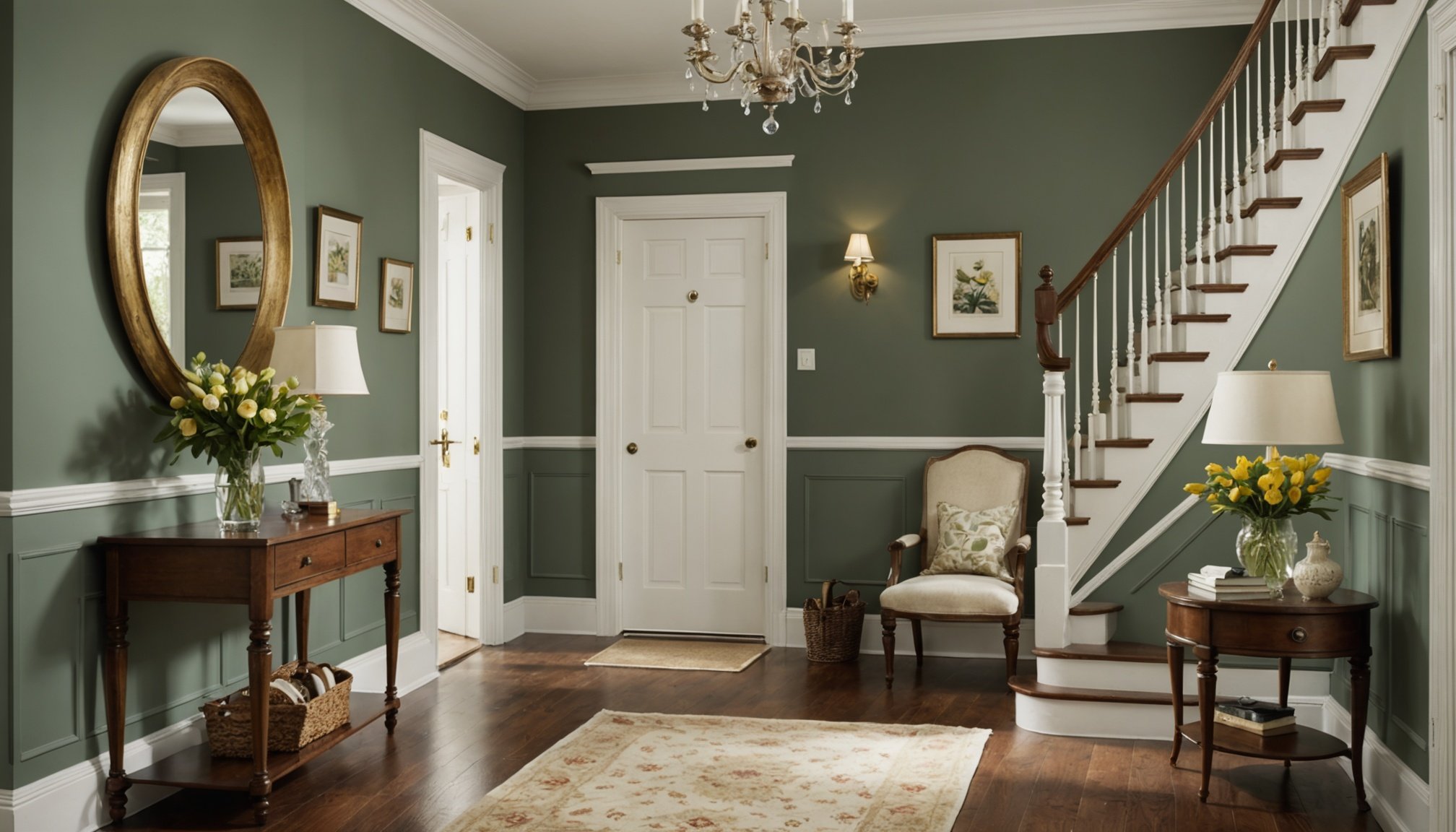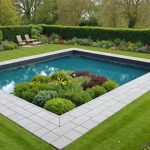Understanding the Importance of Light in Small Foyers
The role of light in small spaces is crucial, especially in a foyer design. Natural light enhances the appearance of small areas, transforming them into inviting and open spaces. When light floods a small foyer, it not only optimizes the area physically but also creates an illusion of greater expanse. This is essential for maintaining a welcoming environment in UK homes, where home aesthetics are highly valued.
The psychological effects of light and color on space perception play a significant role as well. Light hues on walls or floors paired with abundant natural light can make a compact foyer feel more spacious. Moreover, the way light interacts with colors can alter one’s spatial awareness, making a limited area appear larger.
A découvrir également : Discover the Best Energy-Saving Smart Home Devices in the UK: A Comprehensive Guide
In UK home design, brightness carries cultural significance. Historically, natural light has symbolized warmth and openness, values cherished in traditional and modern house designs. Bright, well-lit foyers can set a positive tone for the rest of the home, emphasising a harmonious blend between functionality and aesthetic appeal in British interior design. Thus, prioritizing light in small spaces like foyers is not just a trend but a reflection of deeply-rooted cultural ideals.
Optimal Color Palettes for a Bright Foyer
Creating an inviting foyer involves making the right color choices that reflect light and draw warmth into the space. Light-reflective colors are particularly effective in enhancing the luminosity of an entrance, making it both practical and aesthetically pleasing. These shades, often found in UK interior design trends, include soft whites, subtle creams, and pale greys. Such neutral colors not only amplify existing natural light but also give the foyer a spacious and open aura.
A lire également : Lustria luminary: illuminate your space with style
Incorporating accent colors is key to complementing this brightness. Think about introducing pops of color through accessories or artwork. These elements can be used to add personal flair to an otherwise minimalist or neutral base. You can consider muted tones like dusky rose or soft mint, which are currently trending in UK homes, to maintain a cohesive look while injecting character and depth.
Recently, there’s been a move towards earthy shades, drawing inspiration from nature. These colors, which include warm terracottas and gentle greens, provide a comforting contrast to the brighter palette and are increasingly popular in UK interior design. When selecting your color palette, balance is crucial, ensuring the foyer remains a welcoming gateway that reflects both light and your personal style.
Textures that Enhance Light Reflection
Textures play a pivotal role in creating visual interest and enhancing the perception of space in smaller areas. They can significantly influence how light behaves in a room, turning a cramped entryway into a welcoming portal.
When planning to reflect light effectively in small foyers, consider materials such as glossy tiles, polished metals, and high-sheen paints. These materials bounce light around the room, creating an illusion of more space and making the area feel bigger and brighter. Another excellent option for small spaces is mirrors, which not only expand the appearance of a room but also add an element of depth.
Textures also interact intriguingly with color. For instance, a textured wall in a light color can scatter light throughout a foyer, making it feel warm and open. On the other hand, darker colors with the same textures might absorb light, causing the space to appear smaller. Hence, it’s crucial to choose color and texture combinations wisely to suit your lighting needs.
By focusing on the strategic use of light-enhancing elements, anyone can maximise the potential of small spaces, turning them into vibrant and inviting environments through thoughtful texture selection.
Practical Design Tips for Small Foyers
Creating a welcoming and functional foyer in limited space requires thoughtful design. Small space optimization is essential, especially when you’re working in UK home improvement contexts where compact living areas are common.
Layout Considerations for Maximum Light
One of the key elements to successful foyer design tips is maximizing natural light. Positioning can make a significant difference; ensure that windows are unobstructed and leverage translucent curtains to allow streams of daylight to flood the space, creating an inviting environment. If your foyer lacks windows, consider installing a skylight to introduce daylight from above.
Selecting Furniture for Brightness
Choosing appropriate furniture plays a critical role in making a small foyer feel airy. Opt for sleek, minimalist items that reflect rather than absorb light. Light-coloured, multi-functional furniture, like benches with storage, can declutter while keeping the ambience vibrant.
Mirrors and Glass Elements
Strategic placement of mirrors can create the illusion of a larger space. Hang a large mirror opposite the entrance or adjacent to a light source to reflect and amplify light. Incorporating glass elements, such as tables with glass tops or glass partitions, can further enhance the openness of the foyer design. These elements not only add elegance but also contribute to a brighter, airier atmosphere, making the foyer feel more expansive.
Cultural and Climate Considerations in UK Home Design
Considering UK cultural influences and the climate is essential when designing homes, especially foyers. Design preferences exhibit regional differences across the UK, deeply rooted in local traditions and historical context. For instance, homes in England might lean towards more traditional aesthetics, whereas in Scotland, a distinct preference for rugged, natural materials reflects its landscape.
The climate impact on design is apparent in colour and material choices. In regions with frequent rain, such as Wales, durable and waterproof materials become vital. Foyers often incorporate tiles or stone to withstand wet conditions. Choosing lighter colours might brighten spaces during long, grey winters, offering a sense of warmth and openness.
Foyer aesthetics are integral, often serving as an introduction to a home’s style. Incorporating local architectural styles can add unique charm and authenticity. Georgian-styled foyers might use symmetrical layouts and intricate moulding, while Victorian aesthetics could feature more ornate details and stained glass. Understanding these regional and climatic influences allows homeowners and designers to create foyers that are not only stylish but also functional and reflective of their environment. Such thoughtful design enhances the living experience while respecting cultural heritage.
Recommended Products and Accessories
When considering lighting products to enhance your living space, it’s important to choose fixtures that provide both functionality and aesthetics, especially in smaller rooms. Home decor recommendations suggest opting for UK-made design products that offer quality and style. These products not only illuminate but also add character to your space.
Lighting Fixtures for Small Spaces
In compact areas, the best choices are ceiling lights that provide adequate brightness without consuming floor space. Wall sconces and track lighting are excellent for distributing light evenly across a room. These fixtures create an illusion of larger space by highlighting walls and ceilings.
Accessories for Colours and Textures
To complement lighting, consider accessories that enhance your chosen colour scheme and textures. Cushions, throws, and wall art can add depth and interest. Mirrors positioned opposite light sources can reflect and amplify light, enriching your room’s appearance with minimal effort.
UK Brands for Foyer Lighting
Foyers demand a unique approach, where practicality meets design. UK firms are renowned for their innovative solutions, providing functional yet stylish entrance lighting. Examples include Motoko’s energy-efficient pendants or Tom Dixon’s sleek, sculptural table lamps—both weaving practicality and design elegance together seamlessly.











